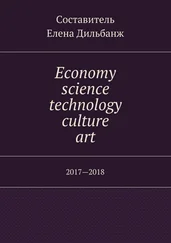1 1 Zachariasen, W.H. (1932). The atomic arrangement in glass. J. Am. Chem. Soc. 54: 3841–3851.
2 2 Bell, R.J. and Dean, P. (1971). The structure of vitreous silica: Validity of the random network theory. Philos. Mag. 25: 1381–1398.
3 3 Landau, D.P. and Binder, K. (2000). A Guide to Monte‐Carlo Simulations in Statistical Physics. Cambridge: Cambridge University Press.
4 4 Allen, M.P. and Tildesley, D.J. (1987). Computer Simulation of Liquids. Oxford: Oxford University Press.
5 5 Woodcock, L.V., Angell, C.A., and Cheeseman, P. (1976). Molecular dynamics studies of the vitreous state: Simple ionic systems and silica. J. Chem. Phys. 65: 1565–1577.
6 6 Takada, A., Catlow, C.R.A., and Price, G.D. (1995). Computer modeling of B2O3: part II. Molecular dynamics simulation of vitreous structures. J. Phys. Condens. Matter 7: 8693–8622.
7 7 Metropolis, N., Rosenbluth, A.W., Rosenbluth, M.N. et al. (1953). Equation of state calculations by fast computing machines. J. Chem. Phys. 21: 1087–1092.
8 8 Greevy, R.L. and Pusztai, L. (1988). Reverse Monte‐Carlo simulation: a new technique for the determination of disordered structures. Mol. Simul. 1: 359–367.
9 9 Kohara, S., Suzuya, K., Takeuchi, K. et al. (2004). Glass formation at the limit of insufficient network formers. Science 303: 1649–1652.
10 10 Vessal, B., Greaves, G.N., Marten, P.T. et al. (1992). Cation microsegregation and ionic mobility in mixed alkali glasses. Nature 356: 504–506.
11 11 Takada, A. and Cormack, A.N. (2008). Computer simulation models of glass structure. Phys. Chem. Glasses: Eur. J. Glass Sci. Technol., B 49: 127–135.
12 12 Soules, T.F. (1990). Stochastic and molecular dynamic models of glass structure. In: Glass Science and Technology, vol. 4A (eds. D.R. Uhlmann and N.J. Kreidl), 267–338. San Diego: Academic Press.
13 13 Johnson, P.A.V. and Wright, A.C. (1982). A neutron diffraction investigation of the structure of vitreous boron trioxide. J. Non Cryst. Solids 50: 281–311.
14 14 Xiang, Y., Du, J., Smedskjaer, M.M., and Mauro, J.C. (2013). Structure and properties of sodium aluminosilicate glasses from molecular dynamics simulations. J. Chem. Phys. 139: 044507.
15 15 Stebbins, J.F. (1991). NMR evidence for five‐coordinated silicon in a silicate glass at atmospheric pressure. Nature 351: 638–639.
16 16 Olivier, L., Yuan, X., Cormack, A.N., and Jäger, C. (2001). Combined 29Si double quantum NMR and MD simulation studies of network connectivities of binary Na2O‐SiO2 glasses: new prospects and problems. J. Non Cryst. Solids 293‐295: 53–66.
17 17 Huang, L., Duffrène, L., and Kieffer, J. (2004). Structural transition in silica glass: thermo‐mechanical anomalies and polymorphism. J. Non Cryst. Solids 349: 1–9.
18 18 Takada, A. (2018). Voronoi tessellation analysis of SiO2 systems based on oxygen packing. J. Non Cryst. Solids 499: 309–327.
19 19 Wright, A.C., Dalba, G., Rocca, F., and Vedishcheva, N.M. (2010). Borate versus silicate glasses: why are they so different? Phys. Chem. Glasses 51: 233–265.
20 20 Ferlat, G., Charpentier, T., Seisonen, A.P. et al. (2008). Boroxol rings in liquid and vitreous B2O3 from first‐principles. Phys. Rev. Lett. 101: 065504.
21 21 Massobrio, C., Du, J., Bernasconi, M., and Salmon, P.S. (2015). Molecular Dynamics Simulations of Disordered Materials. Heidelberg: Springer.
22 22 Takada, A., Parker, J., Durán, A., and Bange, K. (2018). Teaching Glass Better. Madrid: Cyan.
1 Reviewers:J. Du, Materials Science and Engineering, University of North Texas, Denton, TX, USAJ. Habasaki, Innovative and Engineered Materials, Tokyo Institute of Technology, Yokohama, Kanagawa, Japan
2.9 First‐principles Simulations of Glass‐formers
Walter Kob and Simona Ispas
Laboratoire Charles Coulomb (L2C), University of Montpellier, CNRS, Montpellier, France
In their early days, i.e. in 1940–1950, computer simulations were mainly done to address questions in statistical physics, such as the properties of hard‐sphere systems or the dynamics of simple crystals [1]. When a few decades later computers became more powerful and more accessible, it became possible to study the properties of real materials. For this, researchers used an approach that today is referred to as classical molecular dynamics (MD), i.e. the interactions between the particles that constitute the material are described by an effective potential with a form chosen in a rather ad hoc manner, e.g. Lennard‐Jones. The parameters of the potential (e.g. the depth and the position of the well in the Lennard‐Jones potential) are selected such that the density, the melting temperature for a crystal, or other macroscopic properties of the simulated system matches experimental data. Once these interactions are known, one solves numerically Newton’s equations of motion and hence obtains the trajectories of all the particles ( Chapter 2.8, [1]). From these trajectories, one then can determine physical properties of the system such as the radial distribution function, diffusion coefficients, or elastic constants.
Although simulation studies with effective potentials are very valuable to gain qualitative insight into the properties of liquids and solids, they usually do not allow to obtain a good quantitative description. The reason for this failure is that most properties depend in a quite sensitive manner on the potential that describes the interactions between the constituting particles of the material. Since normally these interactions depend not only on the type of atoms considered but also on the microscopic environment of the particles (e.g. the bond strength between an oxygen and a silicon will change if a hydrogen is approached to this pair), it is basically impossible to come up with a simple potential‐energy expression that could describe faithfully all these different environments. This problem is particularly pronounced for glasses where, in contrast to crystals, each atomic species has multiple local environments. At present, the only method that can address this problem in a systematic manner is the ab initio formalism (also called first‐principles). In this approach one does not rely on a fixed functional form for the interaction potential, but uses instead the electronic degrees of freedom of all atoms to compute the forces acting on them in the system. Once these forces are known, one solves Newton’s equation of motion to determine the trajectory of the particles and, subsequently, the properties of the system. Thus a priori the only input needed for these simulations are the species of the particles, a feature that has allowed ab initio simulations to become a highly attractive method to gain a detailed understanding of the properties of glass‐forming liquids and glasses.
The goal of this review is to give a brief introduction to the method, discuss its advantages but also its problems, and then to present some specific examples showing that this type of simulation is indeed very useful to improve our understanding of glasses at the microscopic scale. We will first focus on structural properties in view of the major problems caused by atomic disorder, especially in complex glasses. Vibrational properties will then be examined as the heat capacity, thermal conductivity, or transparency directly or indirectly depends on them. Because solid‐state nuclear magnetic resonance (NMR) yields detailed insights into the local structure of materials ( Chapters 2.2and 2.4), especially when long‐range symmetry is lacking, we will conclude this chapter with a brief description of the calculation of NMR spectra.
Читать дальше












